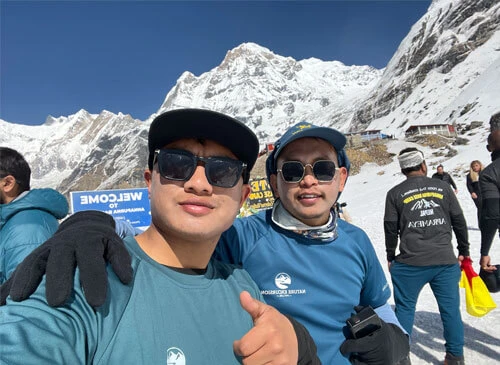Introduction to the Annapurna Circuit with the Poon Hill Trek of 16 Days
The iconic Annapurna Circuit is one of the most popular and demanding trekking destinations in central Nepal, and it takes trekkers deep into nature, where they meet the splendid glamour of mother nature. Offering a diverse range of lush landscapes, picturesque mountains, flora and fauna, and detour, along with the distinctive traditions of the Manangi and Thakali people. It has remained a top traveler's choice for decades.
However, the Annapurna Circuit with Poon Hill for 16 days offers dramatic landscapes, towering waterfalls, suspension bridges, and magnificent glimpses of snow-capped mountains along with Annapurna I and Dhaulagiri I, which enhance your journey once-in-a-lifetime. Not only this, but the welcoming gestures of the locals and their friendly behavior even make this journey more special and remarkable.
The 16 days of Annapurna Circuit with Poon Hill start with an eight to nine-hour scenic drive from Kathmandu to Jagat. Then the trail continues following the Marsyangdi river and passes through Dharapani, Chame, Pisang, Manang, Siri Kharka, Tilicho Lake via Tilicho Base Camp, Siri Kharka, Leader, Thorang Phedi, Muktinath, Tatopani, Ghorepani, Pokhara, and back to Kathmandu. You will spend a night in each of the places during this incredible adventure.
As you dive into this incredible adventure, you will have the opportunity to witness a wide range of flora and fauna, as it falls under the Annapurna Conservation Area Projects. Up to an elevation of three thousand meters, you will see rhododendron, chir pine, juniper, Himalayan monal, blood pheasent, Himalayan ghoral, Himalayan thar, etc. and above three thousand meters, you will see snow leopard, mountain goat, blue sheep, vulture, eagle, Himalayan griffon, Tibetan snowcock, Himalayan marmot, alpine trees, etc.
The valley is significant for its historical and ancient monasteries that date back many centuries and sparkle with deep religious and cultural immersion. You will enjoy every moment of your journey, seeing a colorful prayer flag on each step and passing through antique caves and monasteries. During the 16 days of the Annapurna Circuit with Poon Hilll, you will encounter a mix of Buddhist and Hindu religions. The six hundred-year-oldest Brakha monasteries, Milerapa Cave near Manang village, the burning flame at Muktinath that has been burning from last 2,000 years, and Muktinath Temple (a pilgrimage site) are the sacred points of the journey that bring prosperity, peace, and joy to your adventure.
Well, the Annapurna Circuit is a flexible itinerary that can be modified as per the backpacker's choice and preference. If you would like to explore more in the mountains, then the itinerary can be extended to 18 days, or if you want to shorten it, it can be made to 14 days of the Annapurna Circuit or 9 days of the Short Annapurna Circuit itinerary.
Which are the mountains I can see during my 16 days of the Annapuorna Circuit with Poon Hill Trek?
In contrast, the Annapurna Circuit with Poon Hill is an iconic trekking route that attracts nature enthusiasts with its indescribable vista of nature. Shining like diamonds, the snowy peaks all through the journey blow away your mind and provide you with heavenly peace. As you jump into it, you will pass through two different valleys that offer different scenery and snow-capped mountains, including three white peaks above 8,000 meters.
The journey of the 16-day Annapurna Circuit with Poon Hill starts from Jagat, and you will see Annapurna II, III, IV, Mount Manaslu, Lamjung Himal, Tilicho Peak, Pisang Peak, Chulu Himal, Gangapurna, Thoranh Peak, etc. before the pass. After crossing Thorong La Pass and getting to the other side, trekkers will witness Dhaulagiri I with its ranges, Annapurna I, Annapurna South, Himchuli, Nilgiri, Machhapuchhre, and many more.
A typical day during the journey
The Annapurna Circuit with Poon Hill excursion leads you through the classic Annapurna Circuit with a popular view point, Poon Hill, which is famous for morning sunrises. Here is the breakdown of a typical day during the journey.
- We will wake up early in the morning, around 6:00 am, enjoy the morning view of the surroundings, and get a refresh for breakfast.
- We will eat our breakfast between 7 to 8 am, go for a backpack, and reday for the day to start for the next camp.
- During the day, we stop for lunch around eleven to twelve after 3–4 hours of walking. We will take an hour of break for lunch, and after having lunch, we will proceed towards our destination of the day.
- As we arrived at today's camp, we changed our gear, took a shower, got refreshed, and were ready for dinner. We will take our dinner around six to seven. After dinner, we will have a short brief for the next day, and then we go to bed.
- Throughout our journey, our strong porter will help us shift our luggage from one place to another.
This is how we will spend our daily days during the 16 days of the Annapurna Circuit with Poon Hill journey.
Is it worth doing the Annapurna Circuit trek with Poon Hill for 16 days?
The magical Annapurna Circuit, with Poon Hill as a popular view point, is no doubt the best choice for you to embark on. It takes you from 1290 m/4,232 ft. at Jagat Village to 5,416 m/17,769 ft. at Thorong La Top (the highest pass in the world) and has dozens of activities to do and see. As you step towards the journey, Mother Nature will amaze you with dramatic landscapes, lush forests, arid hills, and magnificent snowy mountains.
Secondly, the Annapurna Circuit, along with Poon Hill, offers unique and mixed cultures of Manangi, Thakali, Magar, and Tibetan. It will be the best opportunity for travelers to learn and exchange cultures with them. As you are from different parts of the world, seeing their cultures, livelihoods, typical days, etc. might be new and something different to experience, which you have not experienced at your place. So, jumping into this valley is absolutely worth it, and we guarantee you will love it.
What is the cost for 16 days of Annapurna Circuit and Poon Hill?
Talking about the cost of the 16-day Annapurna Circuit along with Poon Hill, it is an adventure that justifies the real value of your money that you have invested with us for this incredible adventure. The cost of the adventure depends on the size of the group, the services and facilities, and the length of the itinerary. Usually, the cost of it ranges from SUD 800 to SUD 3,000, fully depending on your choice and preference.
While selecting the package, usually you will have three options to choose from: budget treks, standard treks, and luxury treks with better facilities. On average, you will spend USD 30 to USD 45 as daily expenses for food, accommodation, and drinks, while a porter can be hired for USD 20 on a daily basis.
In contrast, the journey to the Annapurna Circuit with Poon Hill falls under the Annapurna Conservation Area. To enter into it, a backpacker is required to get the ACAP permit and Tims Card, which cost USD 23 for the ACAP permit and USD 15 for the TIMS card.
Altitude sickness and difficulty on a 16-day Annapurna Circuit with the Poon Hill Trek
The Annapurna Circuit with Poon Hill is a moderate-to-challenging adventure in central Nepal that requires good stamina, both mental and physical. Every day, you have to walk for 6-7 hours and cover 10 to 15 kilometers, including breaks in between, to visualize the breathtaking glimpse of natural beauties.
The journey includes immense climbing uphill, steep descents, and a flat trail. If you have hiking experience or often hike at your place, it will be an advantage for you. The Annapurna Circuit, along with Poon Hill, does not require technical skills as it is a moderate-natured hiking destination in Nepal. Anyone who can walk for 5–6 hours in a day can complete the journey, but remember that walking at higher altitudes requires good physical and mental stamina.
Well, comparing Annapurna Circuit and Poon Hill itinerary with Everest Baase Camp Trek, the chances of altitude sickness are comparably low as the journey starts from low elevation here, and trekkers get enough time to acclimit themselves. Fever, loss of appetite, diarrhea, dizziness, running nose, cough, etc. are the symptoms that can be seen at an early stage. It is common to feel light symptoms at higher elevations.
Regular jugging, swimming, cardio training, weight lifting, etc. at home before this adventure enhances trekkers enjoyment of this journey. Positiveness, self-confidence, and good physical fitness are important to make the excursion hassle-free.
Why should you choose Nature Excursion for this incredible journey?
While choosing Nature Excursion for your incredible adventure to the Annapurna Circuit with Poon Hill, there are a lot of benefits that we offer that you do not want to miss. We offer not only the best price but also an expert team leader. We have been serving our customers with the best leaders who have decades of guiding experience in the Himalayas of Nepal. They are smart, active, very friendly, have years of guiding experience and knowledge about first aid, are informative, good at speaking English, are well trained, and have received a guiding license from the government of Nepal.
We aim for customer satisfaction, and we do not compromise on giving our best and satisfying you. From the date of your arrival in Nepal, during the trekking, and until your final departure home, we will always be here to help you and protect you. During this period of time, if you would like to ask about anything, we are always there for you.
Below are some of the benefits that the Annapurna Circuit with Poon Hill itinerary includes.
- Free airport pick-up and drop-off
- An expert guide with years of guiding experience in the Himalayas of Nepal and a porter
- A budget-friendly package
- First-aid box
- Down jacket, first-aid kit, sleeping bag, and duffel bag during the trek
- Complementary welcome or farewell dinner
- 24/7 support
- No hidden cost
- Transportation as per the itinerary, etc.

.webp)
.webp)

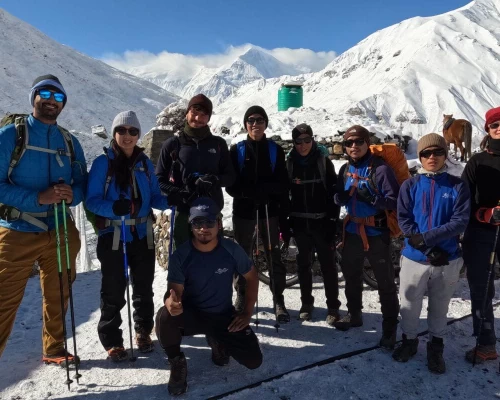

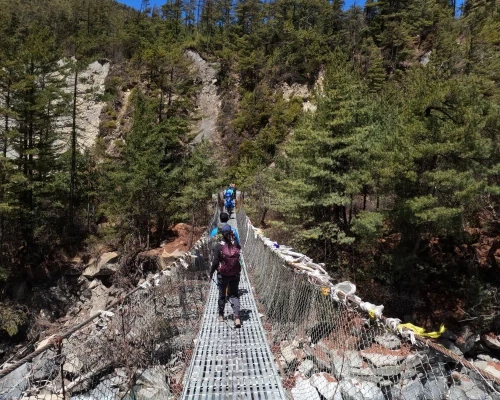
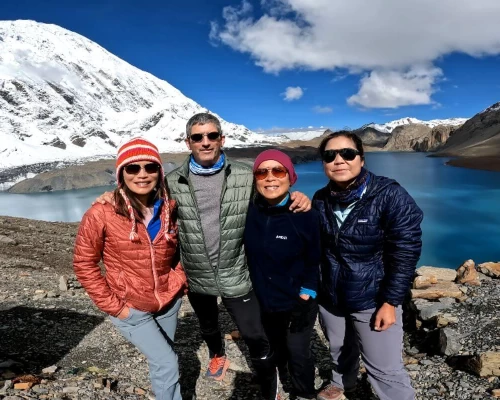
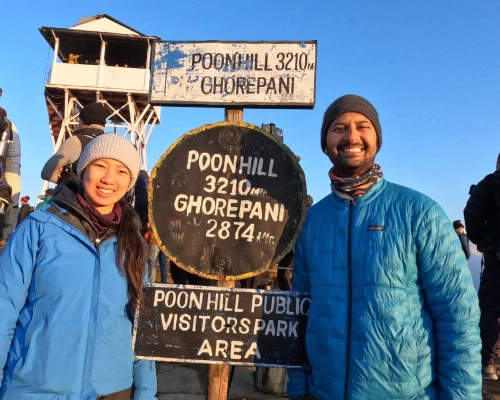
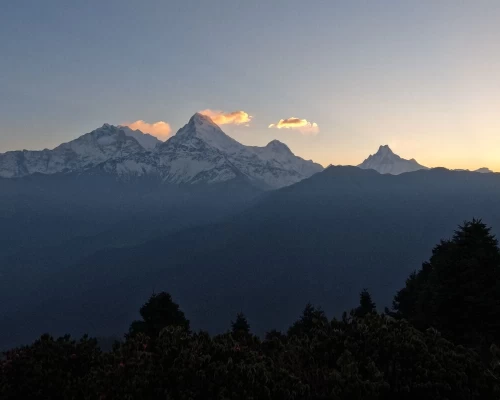
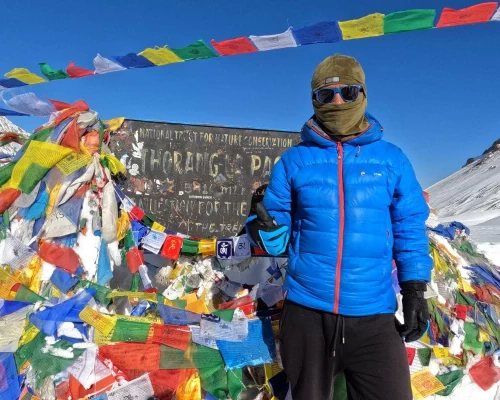
-(1).webp)
.webp)


